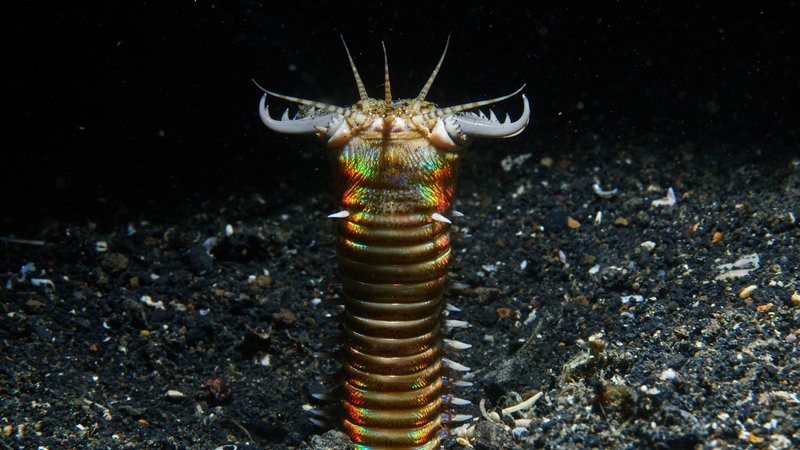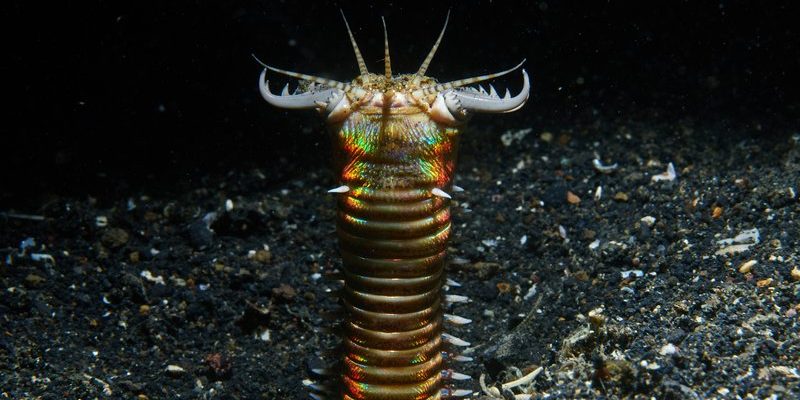
When you set up your aquarium, the allure of natural live rock is hard to resist. After all, it provides a natural habitat for your fish and helps maintain water quality. However, alongside its advantages, live rock can sometimes conceal hidden threats like the Bobbit worm. If you’re wondering what a Bobbit worm is or how it can affect your aquarium, don’t worry—I’m here to break it down for you. Let’s explore the hows and whys of preventing this unwanted guest from entering your aquatic home.
What Is a Bobbit Worm?
First, let’s get to know our sneaky friend a little better. The Bobbit worm, scientifically known as *Eunice aphroditois*, is a marine polychaete worm. These creatures can grow several feet long and are known for their impressive hunting skills. They bury themselves in the substrate, often just revealing their colorful heads. Here’s the kicker—when potential prey swims by, they strike with lightning speed, making them fierce predators in the ocean.
Bobbit worms are more than just an interesting marine lifeform; they can be serious trouble in a home aquarium. The problem arises when they sneak into your tank through live rock, often without you even realizing it. These worms can outcompete your fish for food and can even pose a threat to smaller, unsuspecting tank mates. Keeping them out is essential if you want a peaceful environment for your aquatic pets.
How Do Bobbit Worms Enter Your Aquarium?
Now that you know what Bobbit worms are, let’s look at how they can hitch a ride into your aquarium. The most common way is through live rock. If you’ve bought rock from a local fish store or even harvested it from the ocean, it may come with some uninvited guests. This is because live rock often carries various organisms, including Bobbit worms.
You might be wondering how prevalent this issue really is. Unfortunately, it’s quite common. Many aquarium enthusiasts have unknowingly added these worms to their tanks. They might seem harmless at first, but over time, you’ll realize their potential for disruption. By understanding how they transfer via live rock, you can take steps to prevent their entry.
Inspecting Live Rock Before Purchase
An effective way to avoid Bobbit worms is to inspect your live rock thoroughly before purchasing. Look for signs of the worm, which can manifest as little holes or tunnels that might indicate a creature is hiding inside. If you spot any suspicious entry points or even the worm itself, it’s better to move on and find another piece of rock.
Don’t hesitate to ask the store staff about their live rock. Some stores might even have tanks where they keep rock that has been “cleaned” to reduce the chance of pests like Bobbit worms. This can give you peace of mind knowing that you’re bringing home a safer option for your aquarium.
Quarantine New Live Rock
Once you’ve brought home your live rock, the next critical step is to quarantine it. Yes, it might take a little extra time, but trust me, it’s worth it. Quarantine allows you to observe the rock for a few weeks in a separate tank before introducing it to your main aquarium.
During this time, keep an eye out for any hidden creatures. You can even use a fine mesh net to help capture any critters that might scuttle out from their hiding spots. Think of it as giving your new rock a little vacation before it joins the rest of your aquatic family. Not only does this help you check for Bobbit worms, but it can also help manage other potential pests.
How to Treat Live Rock if Suspicious
If you suspect that your live rock might harbor a Bobbit worm, don’t panic just yet! There are treatments you can use to help clean it before introducing it into your main tank. One common method involves soaking the rock in a saltwater solution with a high salinity level.
Here’s how you can do it:
- Prepare a saltwater solution with higher salinity than your tank.
- Let the live rock soak for several hours, checking occasionally for any signs of life.
- Remove the rock and rinse it thoroughly with freshwater.
This method can help dislodge any unwanted pests, including Bobbit worms, allowing you to enjoy your new rock without worry.
Regular Maintenance and Checks
Even after you’ve done your due diligence to protect your aquarium, it’s essential to keep up with regular maintenance and checks. Regularly inspecting your live rock can help you catch any issues early on. Look for unusual holes, tunnels, or any signs of distress in your fish.
Additionally, if you’re adding any new items to your tank, whether it’s rock, coral, or other décor, make it a habit to quarantine these items, too. Building this routine helps ensure that you’re doing everything you can to maintain a healthy environment for your aquatic pets. A little vigilance can go a long way in keeping Bobbit worms and other pests at bay.
At the end of the day, protecting your aquarium from accidental Bobbit worm transfer comes down to being proactive. From inspecting live rock and quarantining new additions to performing regular checks and maintenance, every step counts.
If you approach your aquarium setup with a watchful eye and a bit of care, you can create a vibrant, healthy environment for your fish—minus the lurking predators. Remember, the ocean may be vast and wild, but your own little slice of it can be a safe haven for your aquatic friends. Enjoy your aquarium, and happy fishkeeping!

